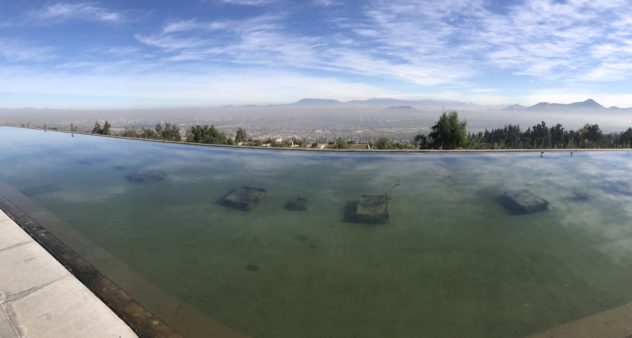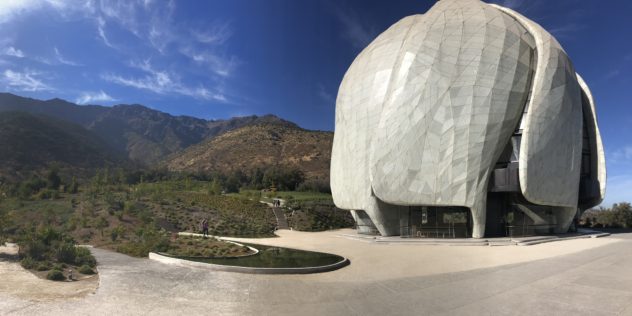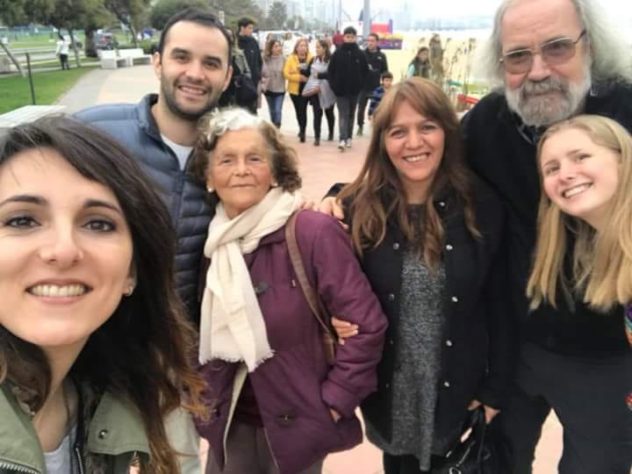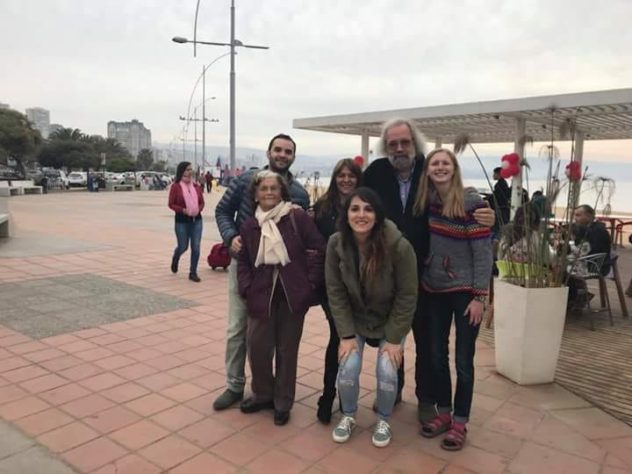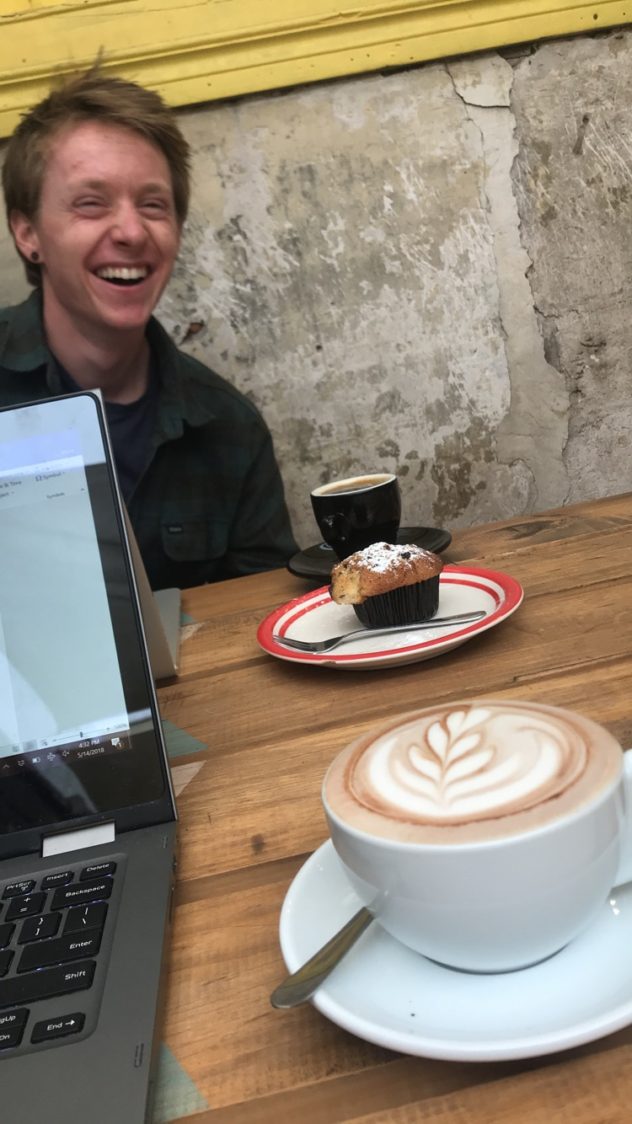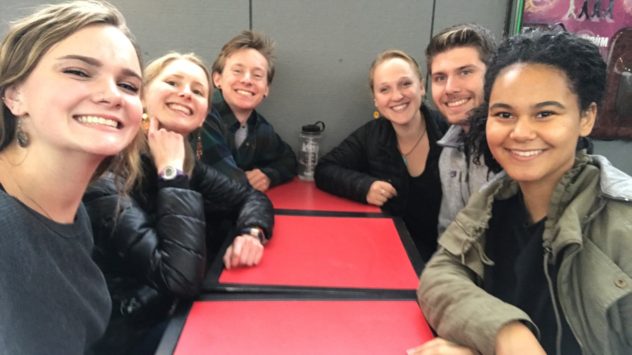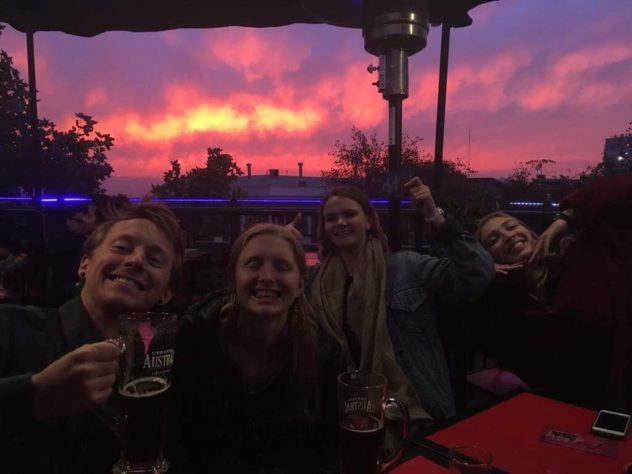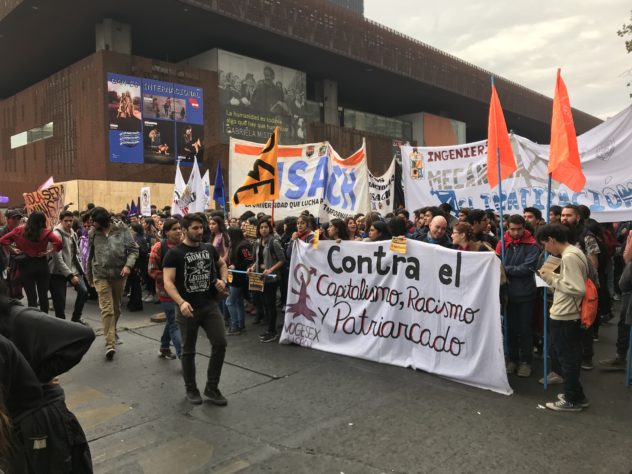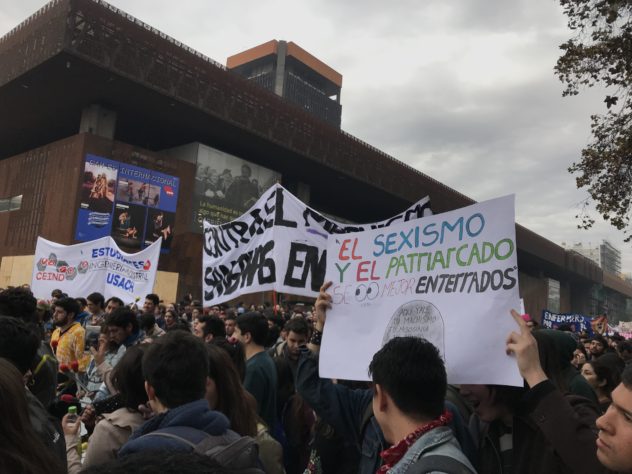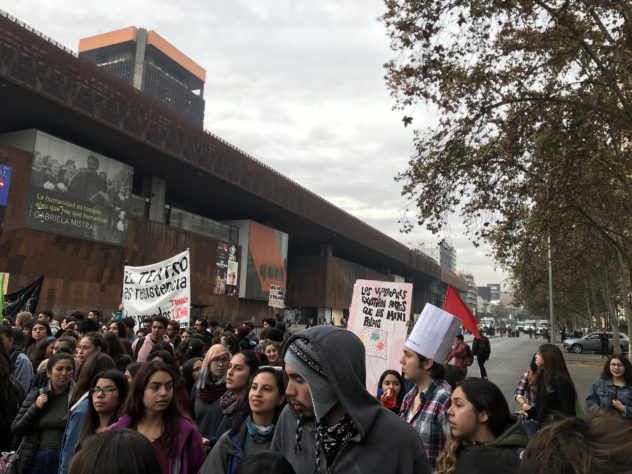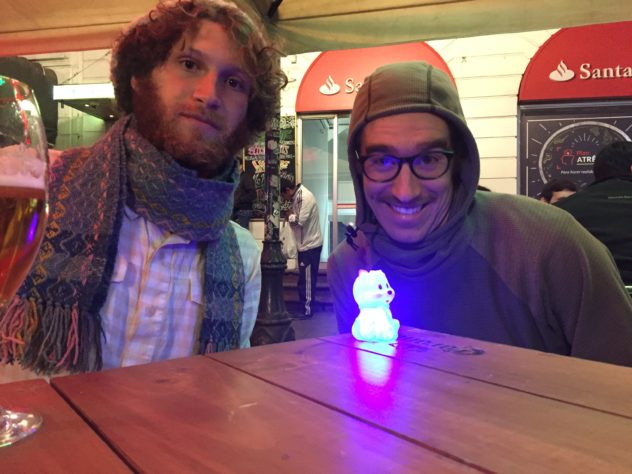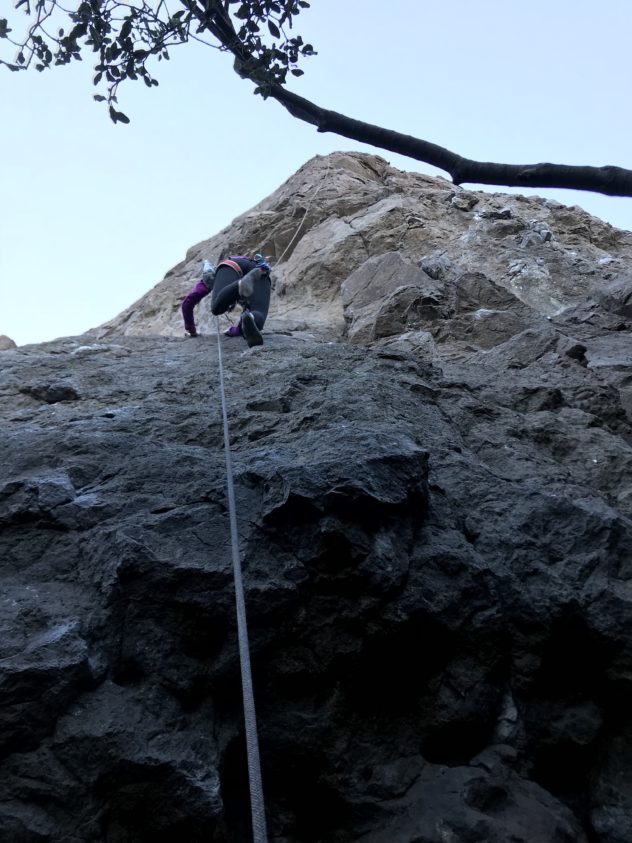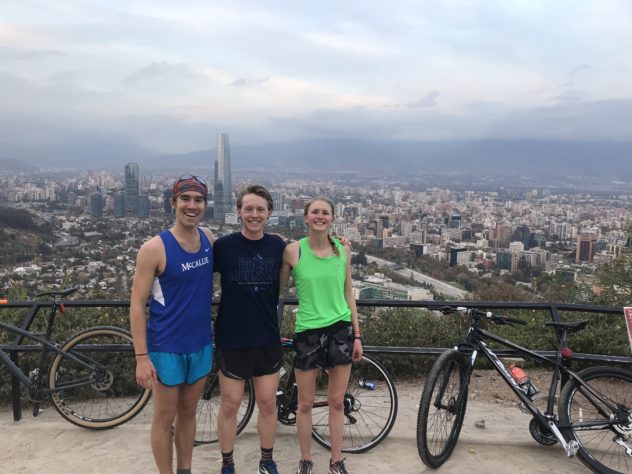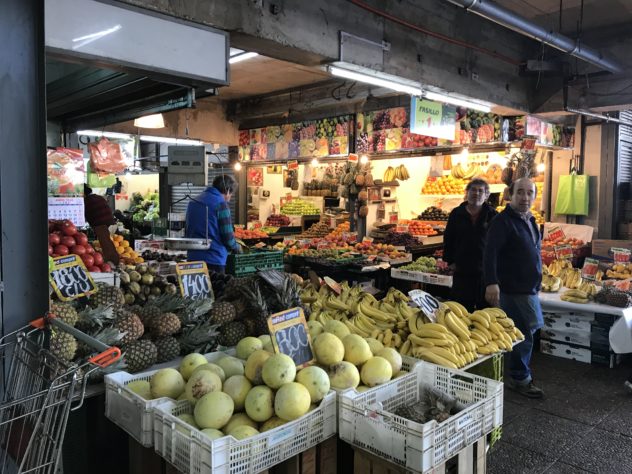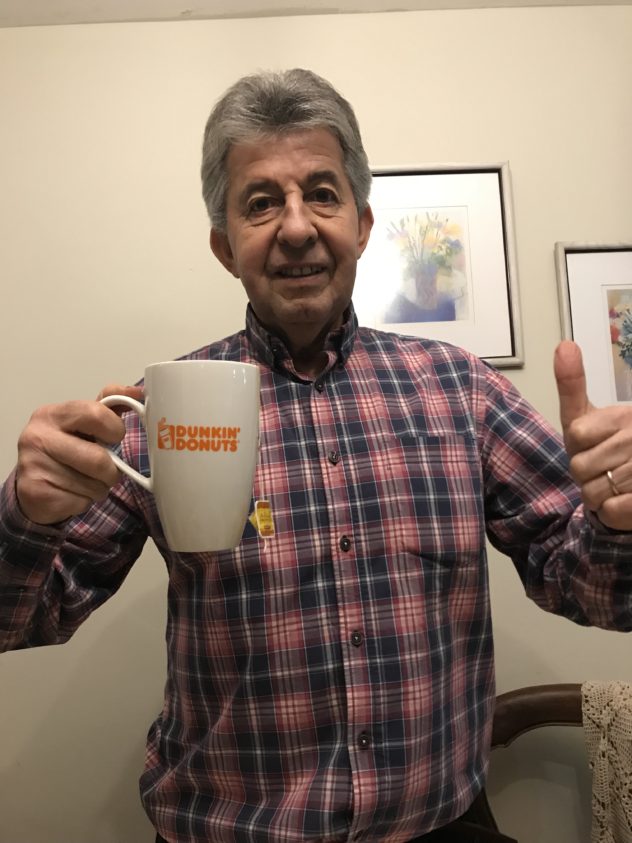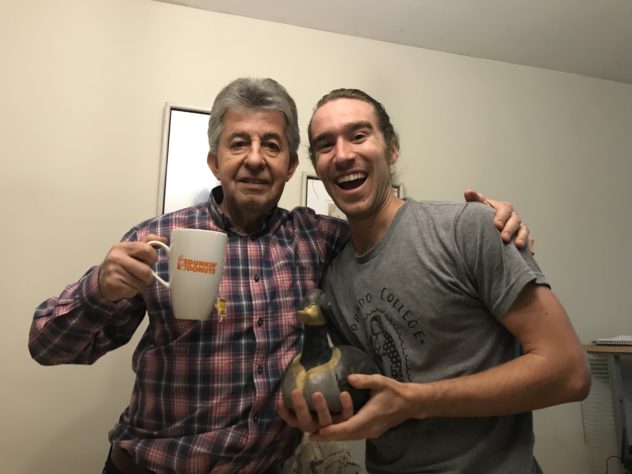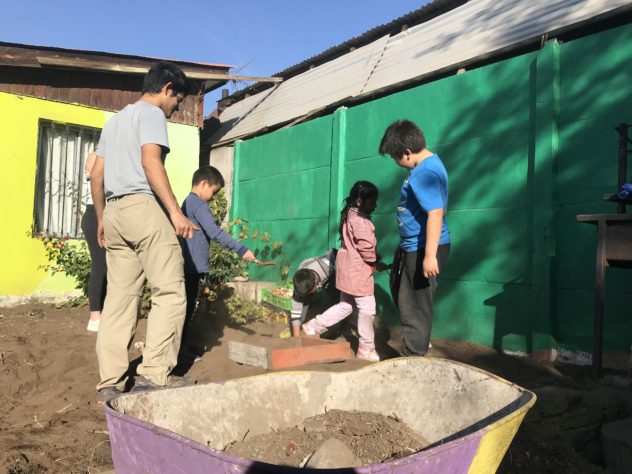San Pedro de Atacama
San Pedro de Atacama was incredible. Absolutely beautiful views, an excellent guide, and so much activity. We could not have asked for a better block break.
Isa had a bunch of us stay at each other’s houses to make our ride to the airport easier, since we left at 4 a.m. Austin, Monique, and Katie came over the night before at 10, and it was fun for them to meet the family. We spent a lot of time talking in the kitchen with Paula, who may have roasted me for the first time: “You know, you said that you had a huge lunch and weren’t that hungry, yet you ate ALL that food at dinner…”
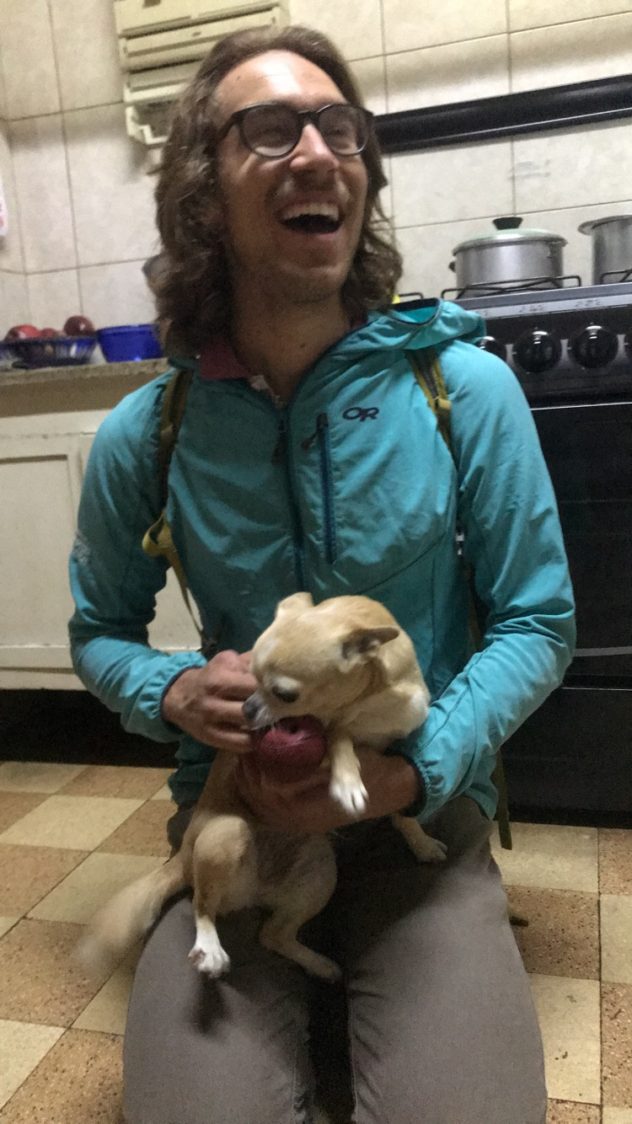
Glad I am now roast-worthy.
Our taxi driver got us at 4:10 and we zipped to the airport in 17 minutes, passing one jovial drunk and Bellavista, the party neighborhood. Tons of people were out and about, and our driver joked, “They’re just getting out of church. Now they’re heading to a convent.”
We were waiting at the airport for our IFSA coordinator, Alice, until after 5. We were getting nervous since our flight was supposed to take off at 6. But once she arrived, we absolutely breezed through security. They barely checked if we had tickets or passports, we didn’t take off our shoes or dump out our water bottles. It was a dream.
Landing in Calama, about an hour from San Pedro, we were all starving and exhausted. We met our guide Marcos, who has the tour guide job mastered. He gave us all water then told us we’d head to the Jumbo, a supermarket not unlike Target, to get breakfast and buy groceries if we wanted to cook in our hostal.
Calama didn’t have much to report. Marcos said it really isn’t much, just a mining town. 20,000 of the people in Calama work for the Chuquicamata Mine, but in this area, there are more tourists than Chileans. We stayed at the Jumbo for an hour then headed on.
Our hostal was just a few streets from the Main Street of San Pedro, Caracoles. Completely orange, with a nice seating area and open kitchen, we were very comfortable.
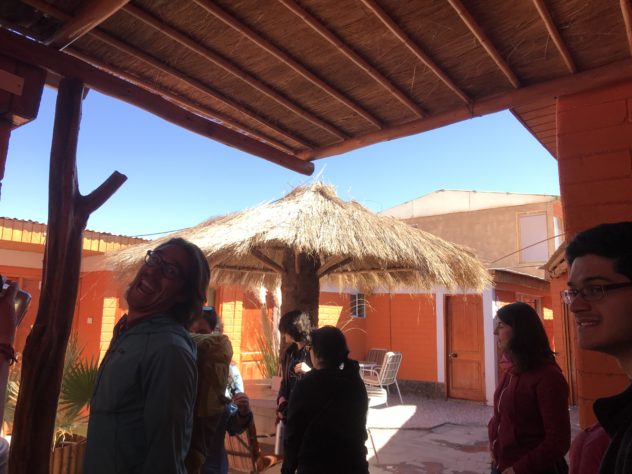
We ate lunch at a local place then a few of us went to the “Franchuteria” for coffee. Franchuta is a word to refer to someone who’s French, but stereotypically snooty French. This place was as snooty as its name implied – the menus were made of wood, and you could order lots of fancy coffees, baguettes, and croissants.
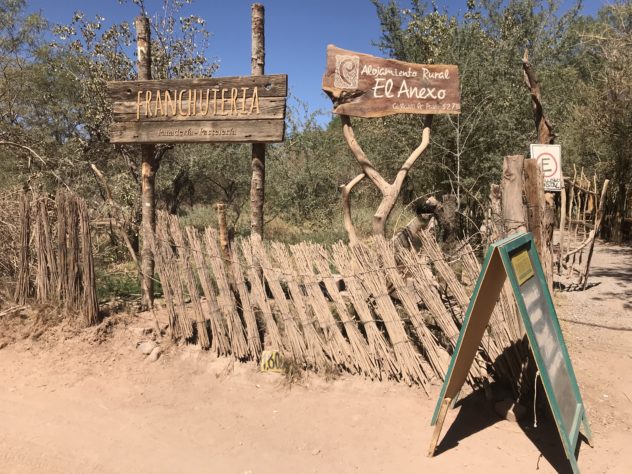
Marcos had us board the van and he started taking us all over for some jaw-dropping views. We went to Valle de la Luna and Valle de la Marte, specifically. Valle de la Marte was discovered by a Belgian priest, and since Valle de la Luna already existed, he thought, “Well, there’s a valley named after the moon, why not name this valley after Mars?” But his Spanish was so bad that people thought he’d named it Valle de la Muerte, Death Valley. So the name is used interchangeably.
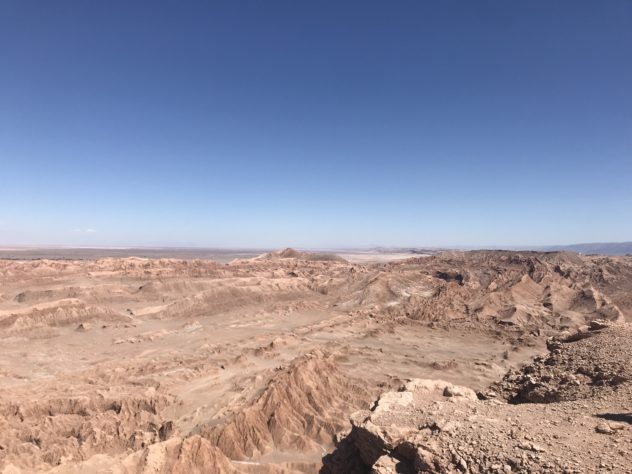
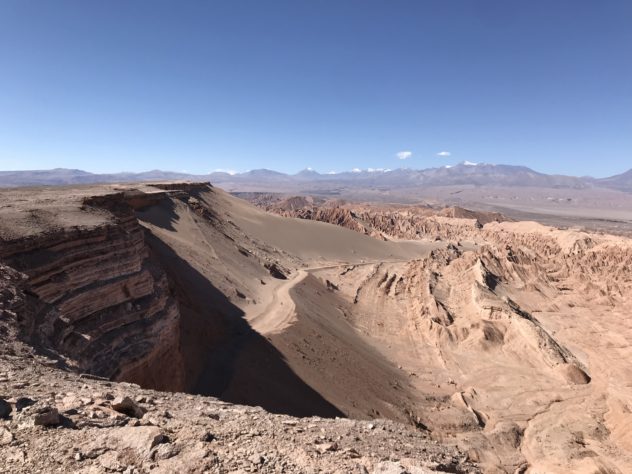
We walked the ridge of the valley, then were able to run down the steep, sandy dunes. We had an absolute ball taking photos and laying out in the sun. Marcos even picked us up at the bottom in the van, taking us to the salt mines in Valle de la Luna. The salt mines were also awesome; we crawled through a bunch of caves made entirely out of salt columns. And we licked the columns too, of course.

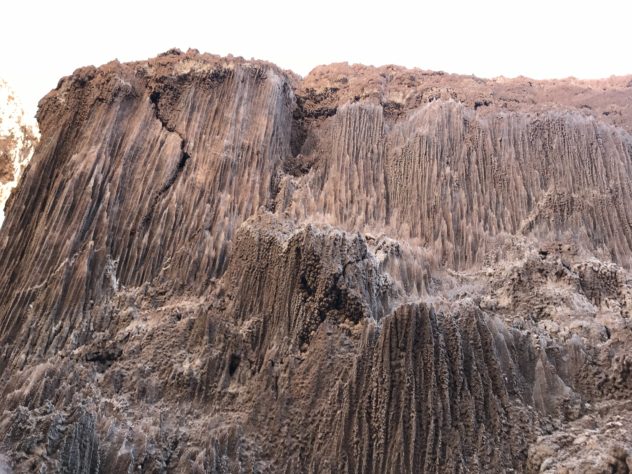
To finish the day, Marcos drove us to one last lookout spot to watch the sunset. We hiked about 20 minutes to this promontory and just stayed there for about 45 minutes, watching the sun. Stunning.
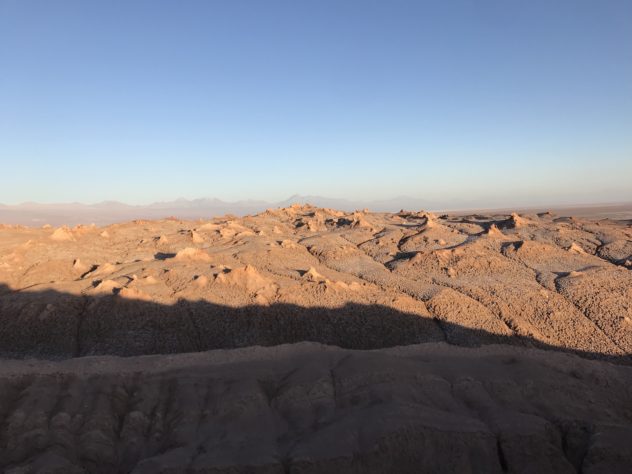
A really long day, but we were so content. Back at the hostal, 6 of us cooked dinner together, making burritos under my suggestion. It felt so nice to cook and also have control over our own food for a change.
The following morning, David, Austin, and I ran for about an hour along a river outside of town. Daylight savings still hasn’t come, so it’s still dark until 8 a.m. here. It was beautiful watching the sun rise over the silhouettes of all the mountains and volcanoes around us.
Our hostal had cereal at breakfast, so I finally had cereal for the first time in a month! A chocolate cereal and a kind of frosted flake cereal – both good and sugary.
Marcos picked us up and we began our drive out for all the day’s excursions. He explained we’d be seeing a greener area that day, “el bosque del desierto.” We first stopped roadside just to see a space station. Many countries test space rovers in this area because it honestly looks like Mars. This station is co-owned by Germans, Japanese, Americans, and Swiss. They have a higher station up in the mountains that you have to trek to, and scientists have to be physically tested to see if they’re athletically capable of reaching it, since the altitude is quite high.
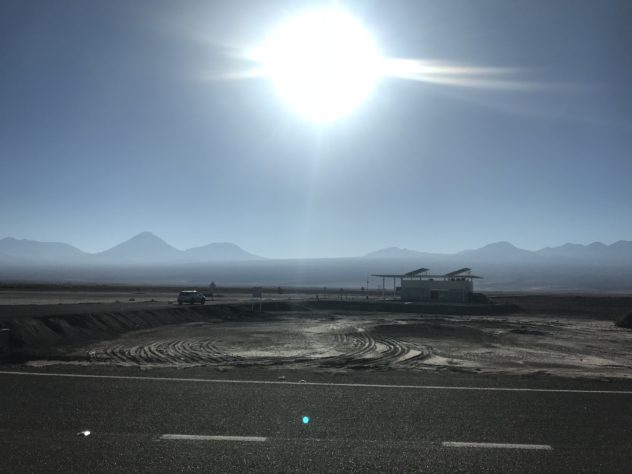
We stopped additionally to see some roadside donkeys and goats, while Marcos also pointed out indigenous plants like tamarugo, pingo pingo, and rica rica.

Our first town visit was Toconao, a very small pueblo whose inhabitants mostly work for a lithium mine. There, we met a shopkeeper who hand weaves sweaters, scarves, and tapestries. She has her own llama, whom we met, plus lots of goats. It felt good to give patronage to a local artist.

We continued our drive to Socaire, the next small town, when Marcos said he was going to show us something that all other tour guides skip: montaña demonio, Demon Mountain. He swore that this mountain is full of iron and has magnetic properties. We passed the mountain, then he stopped the van. “I’m putting it in neutral and taking my foot off the brake.” We were on a downhill. Suddenly, we started rolling backwards, uphill. As if the magnet of the mountain was pulling us back. We were baffled. Our professor Andreea checked and his foot was off the pedal…we’re still skeptical and just don’t get how it was possible.
After a brief stop in Socaire, just to see where we’d eat lunch, we stopped at a small canyon where a bunch of rockclimbers like to climb. Marcos explained that we’d be eating lunch late, so he’d brought us some snacks. “Some snacks” is a gross understatement. He whipped out a table and tablecloth, then proceeded to serve us probably 6 baguettes from the Franchuteria with tomatoes, cheese, butter, and olive oil. He brought his own homemade honey, plus cookies, coffee, tea, and juice. Marcos, legendary tour guide.
Extremely satisfied, we drove on. Another 20 minutes out, we were surrounded by mountains and even a smoking volcano, so we stopped to take photos. The inane photos we took will be something I will remember for a while; a real class bonding moment. We then made our final push to the grand finale: Lagunas Miscanti and Miñiques. We had reached the highest altitude of the day, now viewing lakes located between volcanoes. The views were so picturesque, it was hard to believe what we were seeing was real.
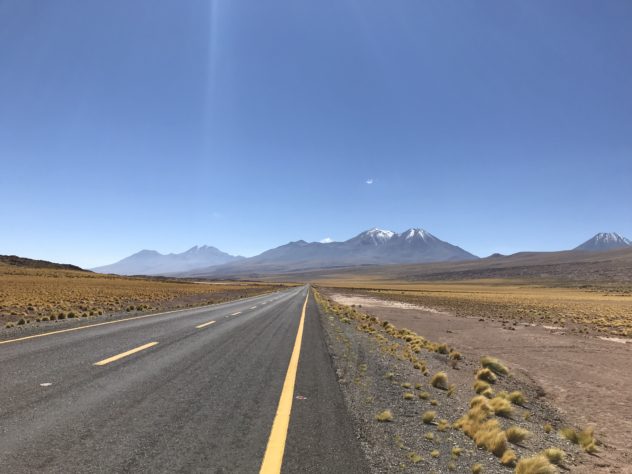
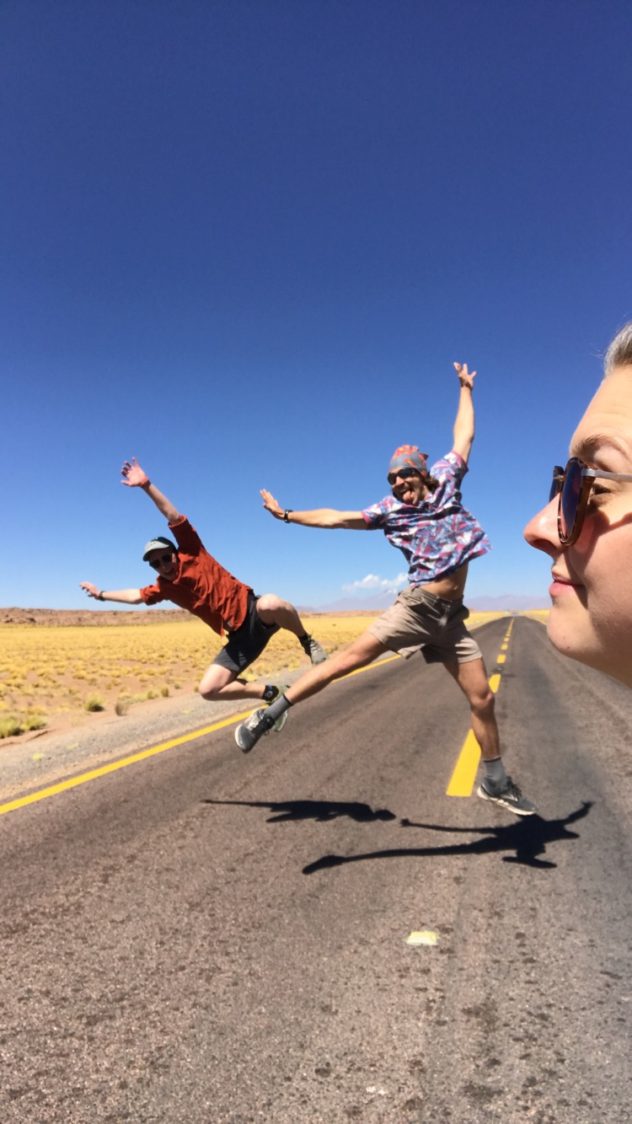
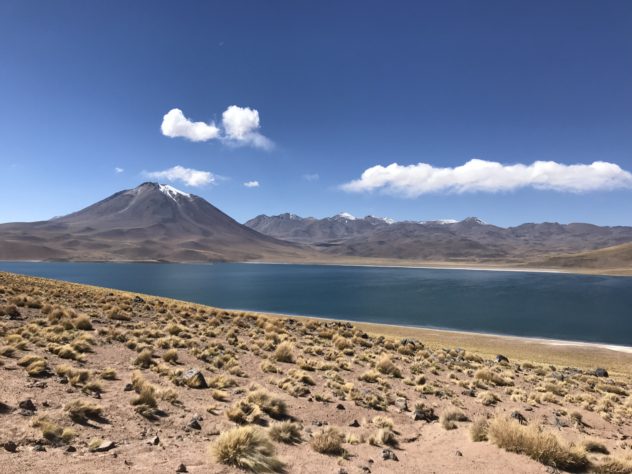
With some chagrine, we got back in the van to head to lunch in Socaire, which was prepared by a local family and delicious. Sleepy and full, we at last went back to the hostal. Most of us relaxed or walked around town, which was pretty touristy – it even had a North Face and Patagonia.
We had been split into 2 groups for an astronomy tour that night – one group at 9 p.m., the other at 11:30 p.m. I was mercifully in the early group, so I made another burrito dinner with some others before we left.
Our guide Rodrigo came to our hostal and picked 8 of us up, plus a couple other tourists nearby. I don’t think any of us had any idea of what we were about to do, but we were blown out of the water.
We arrived at a small house in the middle of nowhere outside of town, just a 10 minute drive. Rodrigo led us down a lit path to a little open area. There, he’d set up a semicircle or comfy spinning chairs around a projector with a PowerPoint presentation. In grammatically-correct but comical English, he began, “Here are your seats. There are ponchos on them, which will be good in the air tonight. We are going to talk about the stars in different ways tonight. First, we are going to look at the moon and see if we can see the space station. Then, we are going to learn about how these celestial bodies were formed through a presentation. After that, we will observe the sky just with our eyes. Then we will return to the telescope, where I will show you some other celestial bodies. At that point, you can enjoy a hot beverage, either a coffee or tea or chamomile. And last but not least, we will then take some photos of the stars and some photos of you all with the stars in the background.”
Needless to say, we were stoked out of our minds.
Rodrigo brought us to the telescope to look at the moon. “Within this telescope, many celestial bodies are already registered. I can just press a couple buttons, and it will go to a body’s coordinates already built in.” Sure enough, the telescope just started rotating to the moon. We all took a look at the moon and nearly lost it, seeing all of its craters in such perfect detail. We had one of my classmates, Noah, use his phone to also get photos of the moon through the telescope – they’re nuts.
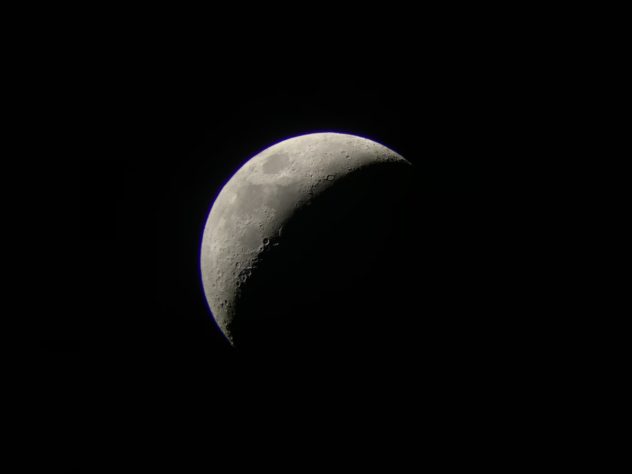
We giddily returned to our seats to hear Rodrigo’s presentation. “This tour is called The Big Bang Experience because everything started with this Big Bang that created our universe,” he began. He then proceeded to drop so many seemingly obvious statements that blew our minds.
“In the beginning, our universe was kind of like a soup, but not made of carrots and chicken.”
“We often forget that we are floating in space. We are on a spaceship called Earth and we are the drivers.”
“We humans are special because we can think about time and space. It makes us intelligent beings, not better than other creatures, but different. This can be hard to understand since there are many stupid people.”
“As beautiful as all of the sky is, I think the most beautiful thing is us. Because we are capable of love. The stars cannot love, but we can love them and appreciate them and each other.”
With this crazy light saber-like laser pointer, Rodrigo started pointing out a bunch of specific stars and would tell us how long it would take for his light to reach that point (e.g. it takes the sun’s light 8 minutes to reach Earth). He outlined Orion first. “Orion and all the constellations are upside down for us in the Southern Hemisphere because they were identified by countries above the equator.” Orion’s right shoulder is a star called Beetle Juice. Beetle Juice is more red, which indicates that it’s an old star that will die sooner. Blue stars are younger. Stars are also brightest the closer they are and also the more massive they are, because they have more subatomic particle collisions to produce light. Rodrigo pointed out this cloudy area in the sky: “You see this? That’s another galaxy outside of our galaxy of the Milky Way.”
Rodrigo also showed us the southern cross constellation, which directs you to the southern axis of the Earth. He led us back to the telescope, where we observed the bottom point of the cross, which is actually two stars, Alpha Crux 1 and 2. They rotate around each other, “like they’re dancing.” We also observed a star cluster and a globular cluster, the difference being the number of stars – the latter consists of millions of stars, and looks like a cloud, compared to the former’s handful of visible stars. “A star cluster is like a group of brothers and sisters that form together. And much like in real life, as they grow up, they move away from each other to develop on their own.”

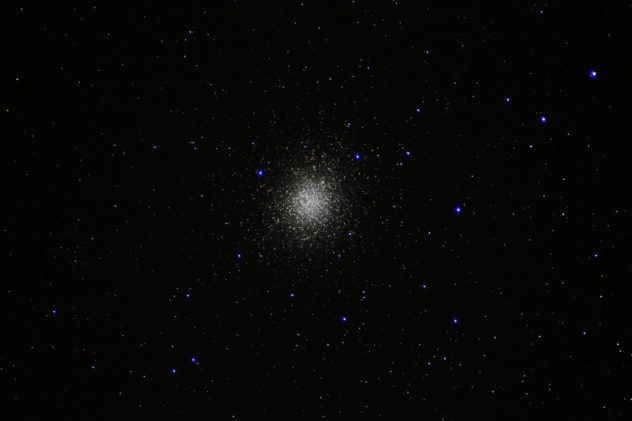
We ended the night sipping on coffee while observing Jupiter and four of its moons, plus taking photos of us among the stars. “Why do we take these pictures? Because they allow us to look at our past. And the more we know about our past, they better we are able to act now in the present.” Boom.

The next day, we rose early to visit the salt flats and go swimming at a lake. The salt flats were a huge expanse of crackly rock, interspersed with pools full of birds. We saw lots of flamingos and other small aquatic birds, like the caití. Marcos even had a bird guide full of feathers he’s collected. The views of the volcanoes were also excellent, the main active volcano being Lascár, formed from the movement of the Nazca and South American tectonic plates. After, we made our way to the ojos de salar, “salt eyes,” which were two small adjacent lakes. The water was salty and cold, but super refreshing.

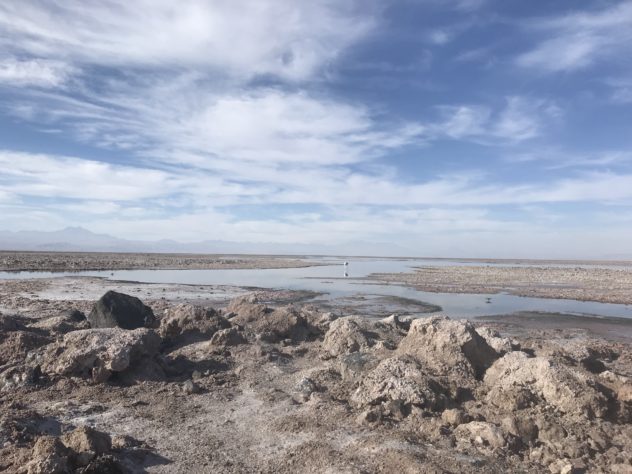
We returned to San Pedro for lunch, then set out again for a bike tour. I am not the best biker, and I was definitely towards the back of the group, but even I could handle this ride. We didn’t go too far out of town, maybe 20 minutes, then arrived at the “Bookstore in the Desert.” This literally was a small wooden structure full of books on Chilean culture, flora and fauna, poetry, indigenous people, and so on, in addition to popular books in Spanish – Pride and Prejudice, Paper Towns. It’s quite a beautiful, quiet, and hipster place, surrounded by indigenous trees and plants and even a sunflower/corn patch. The owners welcomed us and explained how the place is the only desert book store in Latin America, perhaps the world. Europeans who visit have never seen anything like it, anyway. The reason their store is able to survive is because people in the region have lots of respect for culture, and the bookstore strives to be a cultural place. In addition to the indigenous plants, the owners educate visitors about the region and its history.
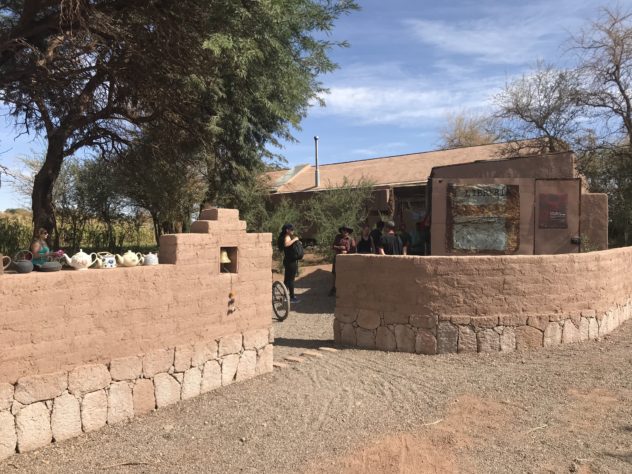
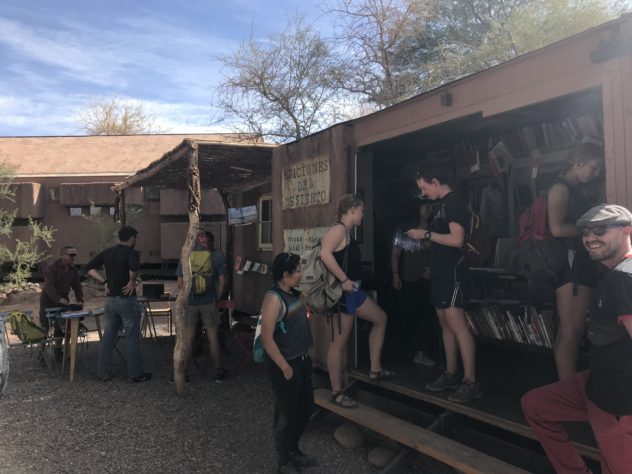
For instance, the owners told us about this tree called “chan-yar” that grows in the area. It has superficial roots so that it can help other plants grow and flourish. In fact, it is incapable of surviving on its own.
They also told us a legend about the volcanoes Láscar, Likancabur, and Quimal. The volcanoes used to be gods and had the ability to move freely. Quimal was a princess who was very beautiful, and Likancabur, the most popular of the male volcanoes, fell in love with her. Láscar got jealous, and being the oldest, professed his love to her first to beat out Likancabur. The princess said she appreciated his words, but confessed that she was in love with Likancabur. In anger, Láscar shot an arrow at Likancabur, but missed, decapitating their younger brother. Likancabur shot him back in the stomach, causing him to erupt. The princess fled out of fear, while Likancabur stayed by Láscar to keep an eye on him and protect her. Láscar is still angry, which is why he’s an active volcano. Now, though Likancabur and Quimal are distant from each other, they cast shadows over one another as the sun rises and sets, and their shadows meet during equinoxes. So romantic.
Upon return, we had a few hours to just relax and bop around. Then we went to dinner at a fancy restaurant called Agua Loca. I sat with Marcos and Alice, which was fantastic Spanish practice and super fun. We left full and exhausted, but pleased.
Our final morning, David, Austin, and I did a final run before packing up and doing our last excursion: a visit to a privately owned goat farm that harvests goat cheese!

We arrived at a small farm with a garden and a few basic structures made of tin and wood. The family welcomed us warmly to a breakfast (we had already eaten at the hostal, but second breakfast is acceptable, right?). We ate fresh tortillas with honey and their goat cheese, plus yogurt with puffed barley they had also harvested themselves. To drink, they gave us a bittersweet tea called chachacoma and juice made of membrillo, a type of indigenous apple.
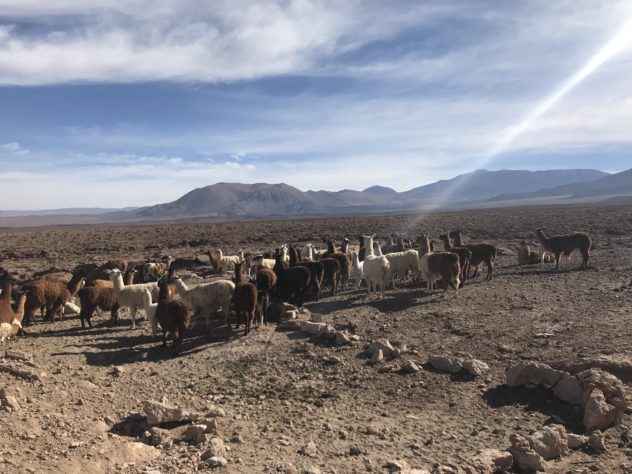
Shortly after breakfast, we got to visit with their llamas and goats, as well as three puppies. The family walks the goats and llamas every day long distances for them to graze. We did one of their walks, and though it was not hard, it was probably 5-6 miles. We trekked probably 2 hours in total through desert, arriving at various rock structures the family has built for their longer treks. Along the way, they showed us different plants – suica, aba, hierba buena – and animals, such as their donkeys out grazing. It was eye opening seeing how much they walk to feed their animals to maintain their farm.
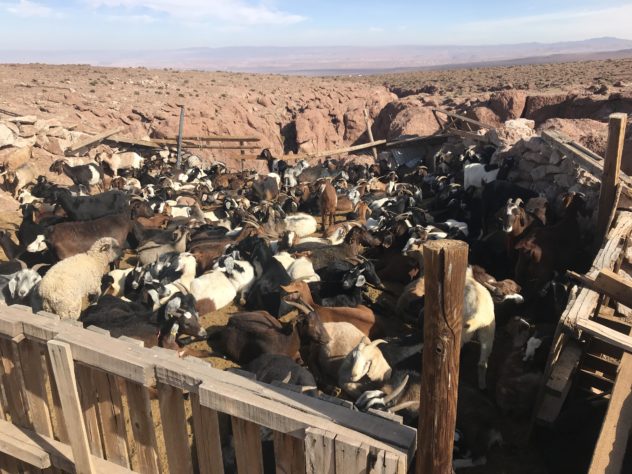
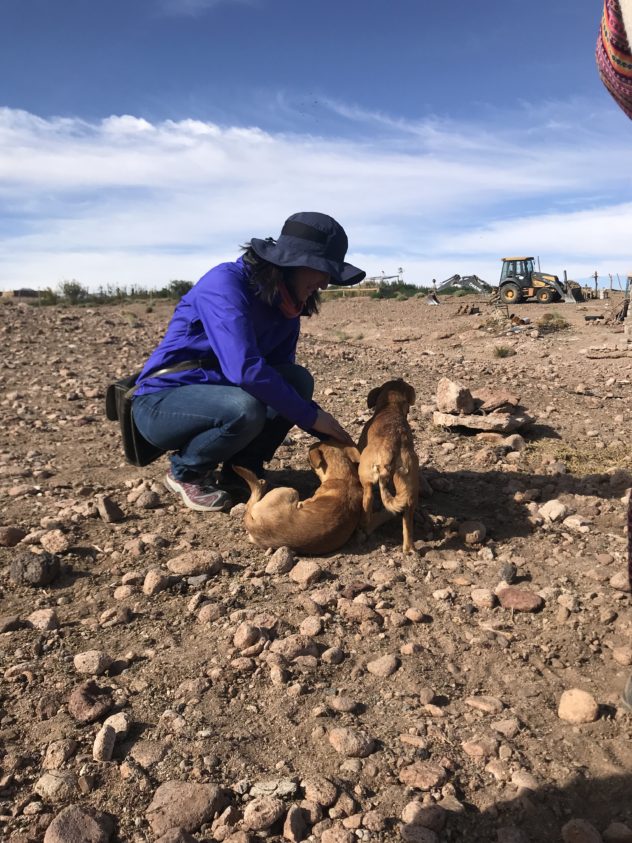
I feel incredibly grateful for the entire experience. Marcos was the most perfect guide; he knew exactly what types of activities we’d like, how long each should be, where we should stop for pictures, where/when we should eat. The visit to the farm is not a tourist attraction – he personally planned it. He played a killer playlist in the van, driving us everywhere, and even shared his binoculars and bird/animal guides with us. I miss him already, and I will never forget this block break.


